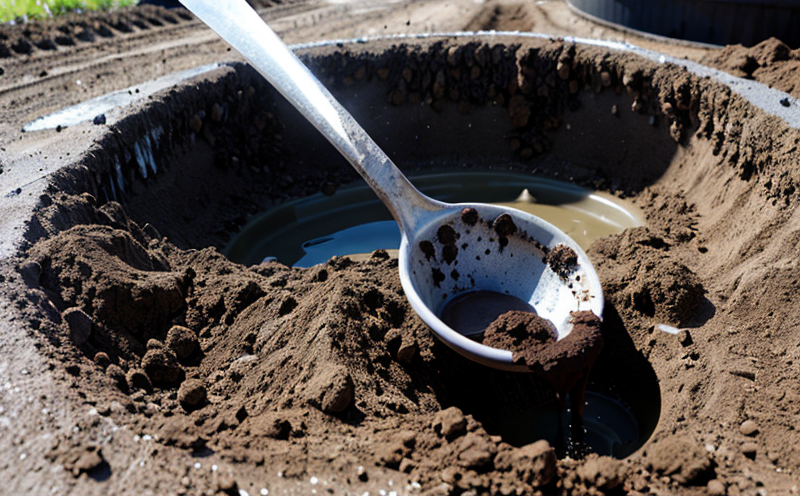ISO 6341 Daphnia Immobilisation Toxicity of Sludge Extract Test
The ISO 6341 Daphnia Immobilisation Toxicity test is a critical assessment for the toxicity of sludge and biosolids extracts. This test measures the lethality or toxic effects on water fleas (Daphnia magna) after exposure to these extracts. The test is widely used in environmental compliance, wastewater treatment processes, and research on the impacts of contaminants from various sources.
This test is essential for ensuring that sludge and biosolids meet environmental standards before they are released into the environment or processed further. It helps in determining whether the extract poses a threat to aquatic life and can inform decisions about safe disposal methods or treatment processes.
The test involves exposing Daphnia magna to controlled concentrations of the sludge/biosolids extract over a specified period. The primary endpoint is the percentage of immobilised Daphnia after 48 hours of exposure, which indicates toxicity levels. This method aligns with ISO standards for environmental testing and provides a standardized approach for assessing the toxicity of these materials.
The test setup includes maintaining the Daphnia in controlled conditions to ensure consistent results. The extract is prepared from sludge or biosolids samples according to specified protocols, ensuring that the sample represents real-world conditions as closely as possible. This prepares it for the exposure phase, where the toxicity assessment takes place.
The test procedure involves several key steps:
- Sample preparation: Ensuring the extract accurately reflects the sludge/biosolids composition.
- Conditioning of Daphnia: Maintaining consistent conditions to ensure accurate results.
- Exposure: Exposing the Daphnia to various concentrations of the extract for 48 hours.
- Observation and data collection: Monitoring the percentage of immobilised Daphnia at regular intervals.
The result is a clear measure of toxicity, expressed as the concentration of extract that immobilises 50% (EC50) or 100% (LC100) of the test organisms. This information is vital for regulatory compliance and for guiding decision-making in wastewater treatment processes.
The ISO 6341 Daphnia Immobilisation Toxicity Test plays a crucial role in environmental protection, ensuring that industrial and municipal sludge and biosolids do not pose risks to aquatic ecosystems when released into water bodies. Compliance with this test ensures that industries are meeting international standards for environmental responsibility.
Industry Applications
| Application | Description |
|---|---|
| Municipal Wastewater Treatment Plants | Evaluating the toxicity of sludge before its final disposal or reuse. |
| Industrial Waste Management Facilities | Assessing biosolids for potential contamination risks and regulatory compliance. |
| Agricultural Enterprises | Determining if biosolids are suitable for land application without harming soil health or local water bodies. |
| Research Institutions | Investigating the long-term impacts of sludge and biosolids on aquatic organisms in controlled settings. |
Customer Impact and Satisfaction
- Increases confidence in regulatory compliance through accurate toxicity testing.
- Safeguards the environment by ensuring that sludge and biosolids do not harm aquatic life.
- Promotes sustainable waste management practices, enhancing overall environmental responsibility.
- Facilitates safer land application of biosolids, reducing risks to soil health and groundwater quality.
- Aids in optimizing wastewater treatment processes for more efficient operation and lower operational costs.
Environmental and Sustainability Contributions
The ISO 6341 Daphnia Immobilisation Toxicity Test contributes significantly to environmental sustainability by providing a robust method for assessing the toxicity of sludge and biosolids. This ensures that these materials are managed in an environmentally responsible manner, reducing their impact on aquatic ecosystems.
By complying with this test, industries can minimize their ecological footprint, contributing to global efforts towards sustainable waste management. The accurate assessment helps in making informed decisions about the safe disposal or reuse of sludge and biosolids, thereby promoting a circular economy approach where waste is seen as a resource rather than a burden.
The test also plays a crucial role in research and development, supporting innovations that enhance environmental protection and sustainability. By understanding the toxicity levels, industries can develop more effective treatment methods and safer disposal options, leading to reduced environmental impact and improved public health outcomes.





